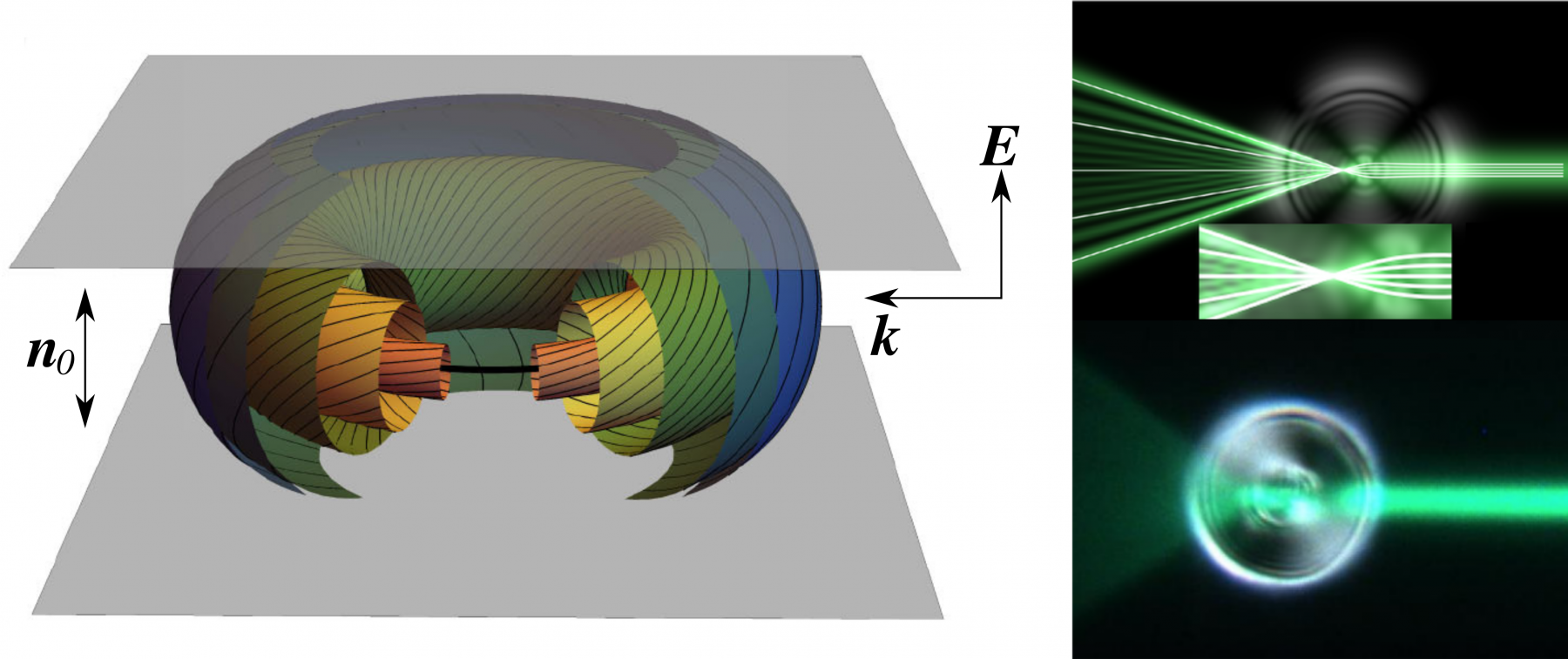In practically all branches of physics, different types of solitons, with a number of them enjoying topological protection, are found. Here we explore how one- and two-dimensional topological solitons formed by spatially localized continuous orientational patterns of optical axis in uniaxial birefringent media interact with light. These solitons, in the forms of one-dimensional twist walls and two-dimensional skyrmions, are controllably generated in thin films of cholesteric liquid crystals to introduce spatially localized patterns of effective refractive index. Laser light interacts with these solitons as quasiparticles or extended interfaces of different effective refractive indices seen by ordinary and extraordinary waves propagating within the liquid-crystal medium. Despite our system’s complex nature, our findings can be paralleled with the familiar phenomena of total reflection and refraction at interfaces of optically distinct media, albeit these behaviors arise in a medium with homogeneous density and chemical composition but with spatial variations of molecular and optical-axis orientations. By exploiting the facile response of liquid crystals to external stimuli, we show that the twist walls and skyrmions can be used to steer laser beams and to act as lenses and other optical elements, which can be reconfigured by low-voltage fields and other means. Analytical and numerical modeling, with the latter based on free-energy-minimizing configurations of the topological solitons, closely reproduce our experimental findings. The fundamental insights provided by this work potentially can be extended also to three-dimensional solitons, such as Hopfions, and may lead to technological applications of optical-axis topological solitons in telecommunications, nanophotonics, electro-optics, and so on.
Download a copy of the manuscript

